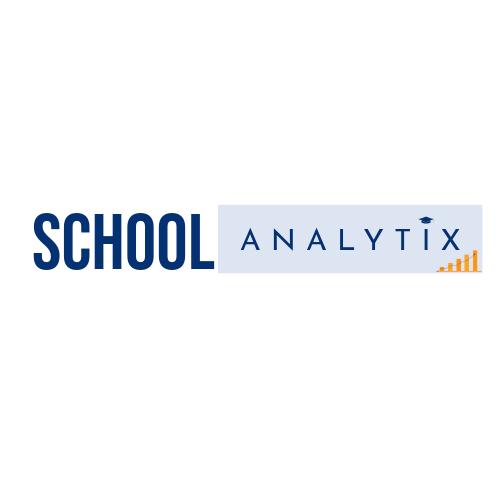When founding a new charter school in Texas, choosing the right technology is crucial for efficient operations, effective teaching, and streamlined administration. From learning management systems to cybersecurity measures, each aspect plays a crucial role in shaping the educational experience and supporting the school’s mission. Here’s a comprehensive guide to help charter school founders navigate the process of choosing technology for their institution.
1.Learning Management Systems (LMS):
When selecting an LMS, you want to look for platforms that can facilitate online learning, course management, grading, and student progress tracking. Additionally, consider features like integration with other tools, ease of use for teachers and students, and scalability.
Examples of good LMS options are:
- Moodle: Moodle
- Canvas: Canvas
- Google Classroom: Google Classroom
- Schoology: Schoology
- Blackboard Learn: Blackboard Learn
2.Student Information Systems (SIS):
Look for SIS platforms that can handle student records, enrollment, attendance tracking, and reporting. Ensure compliance with state and federal regulations regarding student data privacy.
Examples of SIS options:
- PowerSchool: PowerSchool
- Infinite Campus: Infinite Campus
- Skyward: Skyward
- Tyler SIS: Tyler SIS
- Illuminate Education: Illuminate Education
- Classroom Technology:
When it comes to class technology, assess the need for interactive whiteboards, projectors, tablets, or other digital devices in the classroom. Consider technologies that promote student engagement and collaboration.
Options for Classroom Tech:
- Promethean Interactive Whiteboards
- SMART Board Interactive Whiteboards
- Apple iPads with educational apps
- Google Chromebooks
- Microsoft Surface tablets
4.Communication Tools:
Explore communication platforms for facilitating parent-teacher communication, school-wide announcements, and emergency notifications. Evaluate options for virtual parent-teacher conferences and meetings.
Options for Communication Tools:
- Remind: Remind
- ClassDojo: ClassDojo
- ParentSquare: ParentSquare
- SchoolMessenger: SchoolMessenger
- Edmodo: Edmodo
5.Data Analytics and Assessment Tools:
Seek tools that provide insights into student performance, allowing teachers to personalize instruction and track progress effectively. Consider assessment platforms that offer formative and summative assessment capabilities aligned with curriculum standards.
Options:
- Edulastic: Edulastic
- NWEA MAP Growth: MAP Growth
- Illuminate DnA: Illuminate Education
- Renaissance Star 360: Renaissance
- Edmentum Assessments: Edmentum
6.Cybersecurity Measures:
Prioritize cybersecurity to protect sensitive student and staff data from breaches or unauthorized access. Invest in firewalls, encryption, antivirus software, and employee training to mitigate cybersecurity risks.
Options:
- Cisco Umbrella: Cisco Umbrella
- Symantec Endpoint Protection: Symantec Endpoint Protection
- Palo Alto Networks Firewall: Palo Alto Networks
- Sophos Intercept X: Sophos Intercept X
- KnowBe4 Security Awareness Training: KnowBe4
7.Accessibility and Inclusivity:
Ensure that the chosen technologies are accessible to students with disabilities, complying with accessibility standards such as ADA and Section 508. Consider the needs of diverse learners and provide tools that accommodate various learning styles and preferences.
Options:
- Texthelp Read&Write
- Kurzweil 3000
- Bookshare
- Tobii Dynavox
- Microsoft Accessibility Tools
8.Professional Development and Training:
Plan for training sessions and ongoing professional development to help teachers and staff effectively utilize the chosen technologies. Consider partnering with technology vendors or educational organizations to provide tailored training programs.
Options:
- Atomic Learning: Atomic Learning
- LinkedIn Learning: LinkedIn Learning
- Google for Education Training Center: Google for Education
- EdTechTeam Online: EdTechTeam
- ISTE Professional Learning Network: ISTE
9.Budget and Sustainability:
Evaluate the long-term costs of implementing and maintaining technology solutions. Consider factors such as licensing fees, hardware upgrades, and technical support when budgeting for technology expenses.
Options:
- G Suite for Education (Google Workspace): Google Workspace
- Microsoft 365 Education: Microsoft 365 Education
- Open Source Software (e.g., LibreOffice, OpenOffice)
- Cloud-based solutions with subscription-based pricing models
- Technology leasing options from vendors like Apple or Dell.
10.Enterprise Resource Planning (ERP)
Choose an ERP system that integrates various administrative functions such as finance, human resources, procurement, and inventory management. Consider scalability, customization options, and compatibility with existing systems.
Options:
- Oracle NetSuite: NetSuite
- SAP Business One: SAP Business One
- Microsoft Dynamics 365: Dynamics 365
- Sage Intacct: Sage Intacct
- Workday: Workday
To close off this guide, there are two all-encompassing things to keep in mind when implementing all these technologies: Integration and Feedback.
Integration
As you are implementing these technologies, ensure that they can integrate seamlessly with existing systems and applications. Look for interoperability standards to facilitate data sharing and communication between different platforms.
Feedback
Continuous or periodic feedback on your chosen technologies will help with evaluation and improvement of your school operations. Establish mechanisms for collecting feedback from stakeholders, including teachers, students, parents, and administrators, to continuously improve the use of technology in the school. Regularly evaluate the effectiveness of technology implementations in achieving educational goals and meeting the needs of the school community.
By considering these factors and utilizing the suggested software or solutions, charter school founders can make informed decisions that align with their educational objectives, administrative needs, and budget constraints. This proactive approach will lay a solid foundation for the successful integration and utilization of technology within the charter school environment in Texas.
